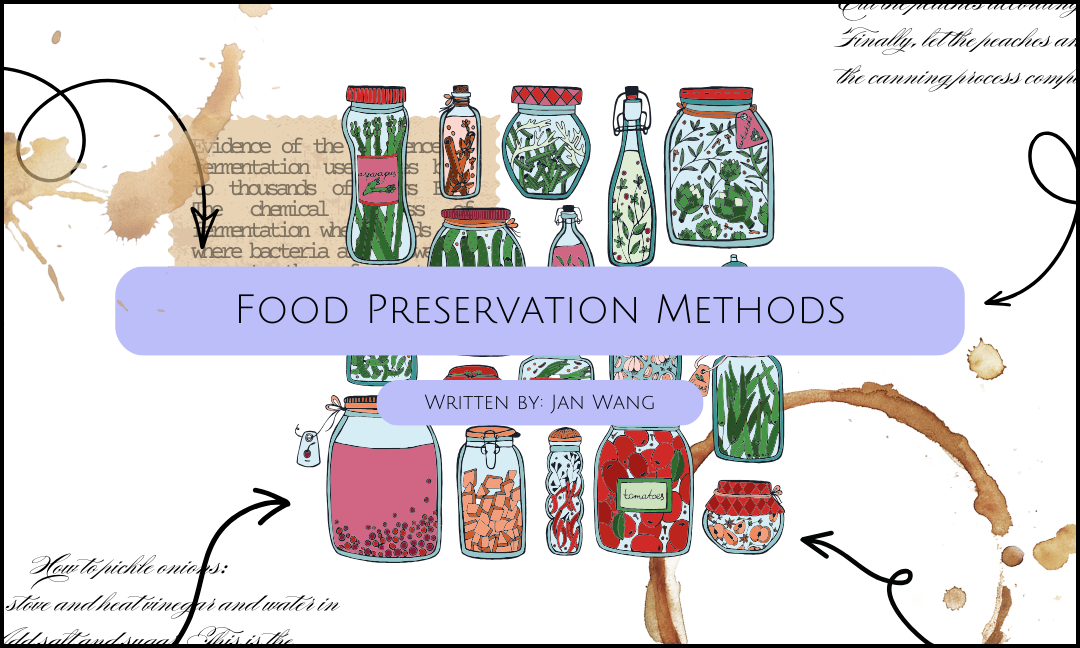Written by: Jan Wang
Edited by: Jiya Mehta
Designed by: Tvisha Lakhani
Published by: Maryam Khan
We all like to buy fresh produce, especially during summer and fall when it’s so abundant. But way too often, the produce sits in our fridge, forgotten after a couple days and isn’t so fresh anymore. When we have excess produce, food preservation methods are important to know in order to prevent wasting food. Today we’ll explore 5 different food preservation methods that are easy to do yourself at home!
Canning
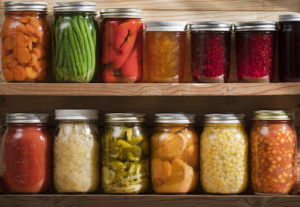
Source: https://www.thespruceeats.com/brief-history-of-canning-food-1327429
Canning is a process used to store the fresh food at a higher temperature without it spoiling. By pushing air out of the can and creating a vacuum seal, and killing the bacteria in the can, food can be stored safely at higher temperatures such as room temperature.
One of the simpler canning methods is water bath canning, and it works especially well for acidic foods.
Water Bath Canning Step by Step
Shelf life: Around 1 year
Drying
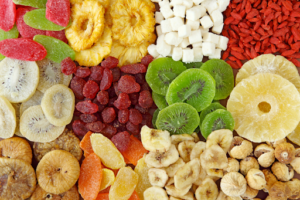
Source: https://www.womenshealthmag.com/food/a22613718/is-dried-fruit-healthy/
Drying is a method that works well for all sorts of different food. It works especially well for fruits and they still taste great and keep their nutrition. Dried fruits can be used in yoghurt, baked goods, snacked on and more!
Simple technique for dehydrating fruit:
Shelf life: Around 6 months
Fermenting
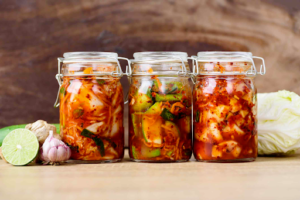
Source: https://www.health.com/fermented-foods-7970958
Fermentation is a chemical reaction. Yeast or other bacteria converts carbohydrates to alcohol or other organic acids under anaerobic conditions (without oxygen). It results in a unique flavour, and also added nutritional benefits! Many of the foods we eat are fermented such as cheese, sourdough, kombucha and more!
Lacto-fermentation: An easy fermentation to DIY at home
Shelf life: 4-18 months (if properly prepared and stored in a cool dark place)
Pickling
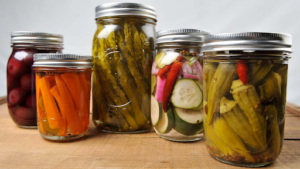
Source: https://www.foodandwine.com/vegetables/pickled-vegetables/5-reasons-start-pickling-home
Vinegar pickling is a simple way to preserve all sorts of vegetables. The vinegar kills microbes that cause food to go bad and results in the pickles having a cool flavour and texture. This is super easy to make at home and only requires basic kitchen ingredients like vinegar and salt (everything else is for extra flavour)!
Here is a quick video explaining how to make pickles with any vegetable:
How To Make Pickles Without A Recipe
Shelf life: Best 2-4 week in the fridge
Cold storage
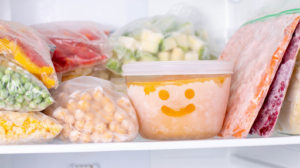
Source: https://www.thedailymeal.com/1124983/does-freezing-food-kill-harmful-bacteria/
Refrigerating and freezing is the easiest way to store excess food and doesn’t require any other ingredients unlike the other methods. Most people already use refrigerators to keep food fresh, and the freezer is a great method that can be used for all sorts of food that can form meats to produce and even doughs.
Although cold storage is already easy enough, there are techniques that can be used to make your life easier when cooking the food later on. For example, pre-chopping vegetables or portioning is very useful.
Here is a video for produce refrigerating and freezing technique ideas. Most of them might be unnecessary for most people, but there’s lots of good general ideas in this video!
살림 초보를 위한 식재료 보관법, 손질 / 냉장고 정리 / 식재료 소분 냉장, 냉동 보관법 / How to store food (SUB)
Safety precautions:
How long food lasts is just a general estimate, it will always vary depending on the method used, how well it was prepared and storage conditions. Instead of only following the suggested time period it will last, always make sure to use your own judgement. Eating spoiled food can cause serious illness so be careful!
Signs of spoilage:
Canned food:
- Broken seal or bulging lid means air has gotten in
- Bubbles in the food when opened
- Rust on the lid of the can
General checklist:
- Food has an unpleasant odour
- Mould or cloudiness in food
- Not eaten after much longer than suggested time
Also to be safe, it’s always a good idea to follow a specific recipe carefully when using a food preservation method for the first time. Different types of food might need different care so you want to understand what’s best for that food and for your safety.
Conclusion
According to madeincanada.ca, “Canadians create over 50 million tonnes of food waste every year despite 60% of it being avoidable through better planning and awareness”.
I hope you’ve found this article helpful and learned about different ways you can keep food fresh and yummy for longer. Share this with a friend who would find it helpful and let’s work toward improving this issue together through planning and awareness!
Other resources:

